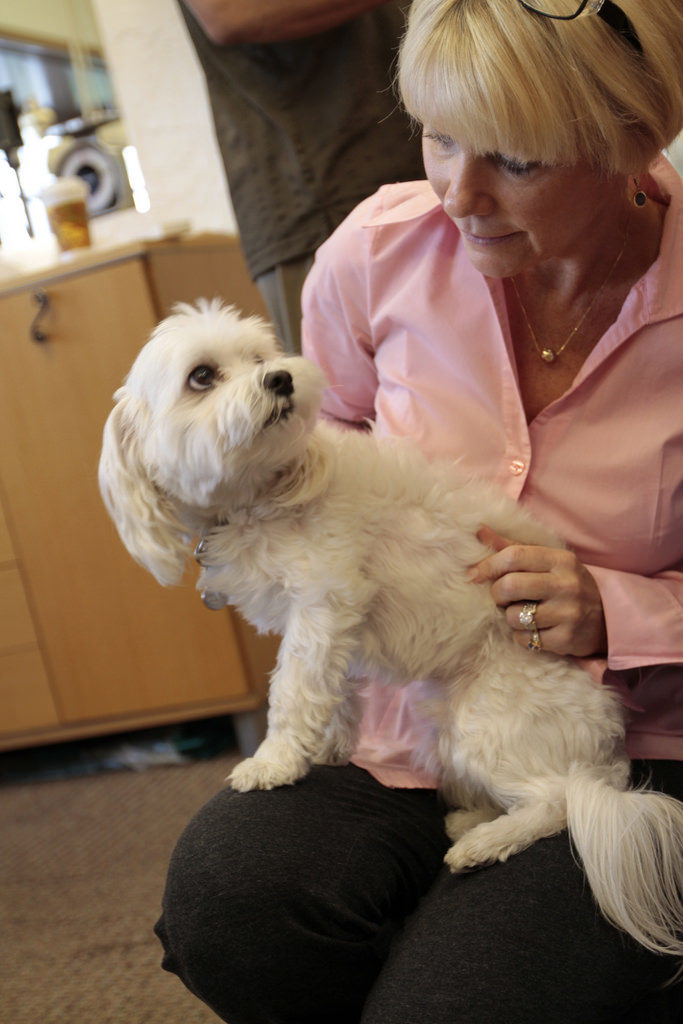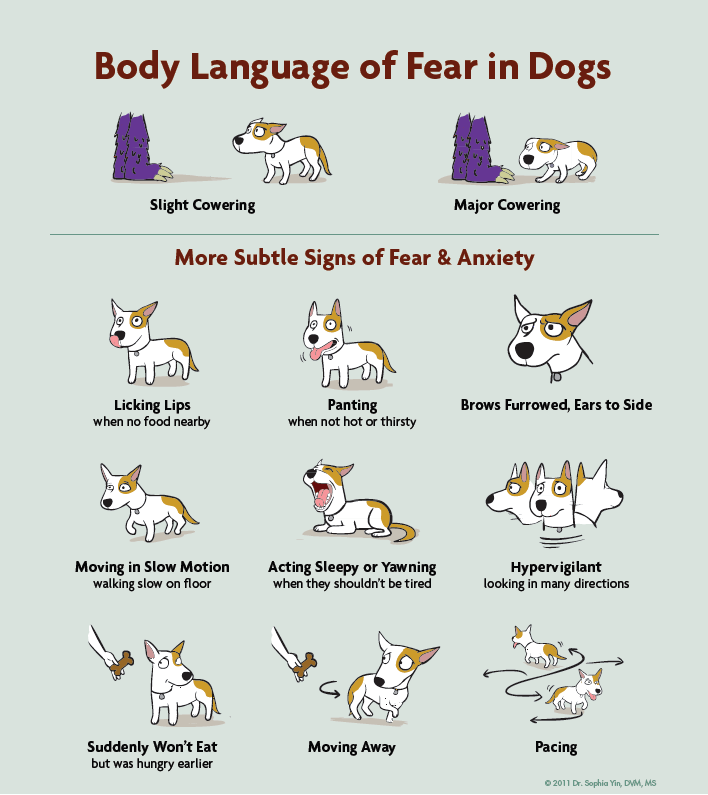There are many sides to this story, and everyone that interacts with dogs has a responsibility to help prevent bites. This includes learning dog body language (see charts below) and exercising caution, especially when allowing children and strangers to interact with them. Understanding why dogs bite is the first step towards prevention.
Why Dogs Bite
The answer to this is simple: communication. Dogs don’t speak our language. But they have vocal cues that they use as well as body language to try and let us know what they are feeling. If these are ignored, however, dogs will resort to another way of communicating – the bite.

Take the following situation for example:
- Your puppy is nervous about the child approaching. Her ears are back, tail is tucked, the whites of her eyes are showing, her body is stiff, and she is trying to hide behind you.
- Your response is to take the leash and pull her toward the child with a soothing “it’s okay. Kids are nice.” (Remember, your dog has no idea what you are saying).
- The child keeps coming toward your puppy and reaches out with his hands…
- Your puppy’s response? She yawns. She pulls her lips back, licks them, and turns her head away. Perhaps she growls (some won’t!).
- You keep letting the child approach.
- Your puppy has only one more way of letting you know she is not comfortable, and that is with her teeth. So she bites.
Scenarios similar to this can happen for a variety of reasons. Dogs that bite are not always aggressive – it can be caused by fear, like in the scenario above. If your dog has resorted to biting, it’s most likely because you ignored all his other cues.
Remember, it’s not just kids! This dog is not comfortable with the woman whose lap he is on.

This does not mean that your dog should be allowed to bite, but it does signify that something is wrong in your communication.
What You Should Do
First, you need to understand that any dog can bite. Any breed, any age, any amount of training. Even if it’s a 10-year-old Golden Retriever therapy dog, if he’s put in a bad situation, he may bite.
Second, you need to learn how to read your dog’s body language. For example, does she stiffen up suddenly any time you approach her with nail clippers? Keep going and you may get bitten. Recognizing when your dog is headed toward biting will help prevent bites. You can download Dr. Sophia Yin’s free posters here.

Third, you need to teach your dog that those situations are safe and that a bite is not needed. This can be done through positive reinforcement training with a professional dog trainer.
Fourth, use common sense. If you have a dog that has tried to bite (or maybe has even bitten) in the past, don’t press your luck. For instance, there are videos on the internet showing people provoking their dogs by putting their hands in the bowls of a food-protective pooches. This is an example of human pride getting in the way of good training.
Don’t tease your dog. If you have worked enough that you can safely put the bowl down, wait for him to finish eating and then pick it back up, awesome. Pushing your dog is a good way to get bit and, unfortunately, it’s your dog that will pay the price if he decides he’s had enough.
Check out more body language warning signs, below:

With human diligence, many dog bites can be prevented, whether you’re the dog owner or the “stranger” meeting a dog for the first time. As owners, it’s important to remember that we know our dogs best–and it’s up to us to respect what they are “saying.” Make sure that YOUR dog doesn’t become the one that bites!

